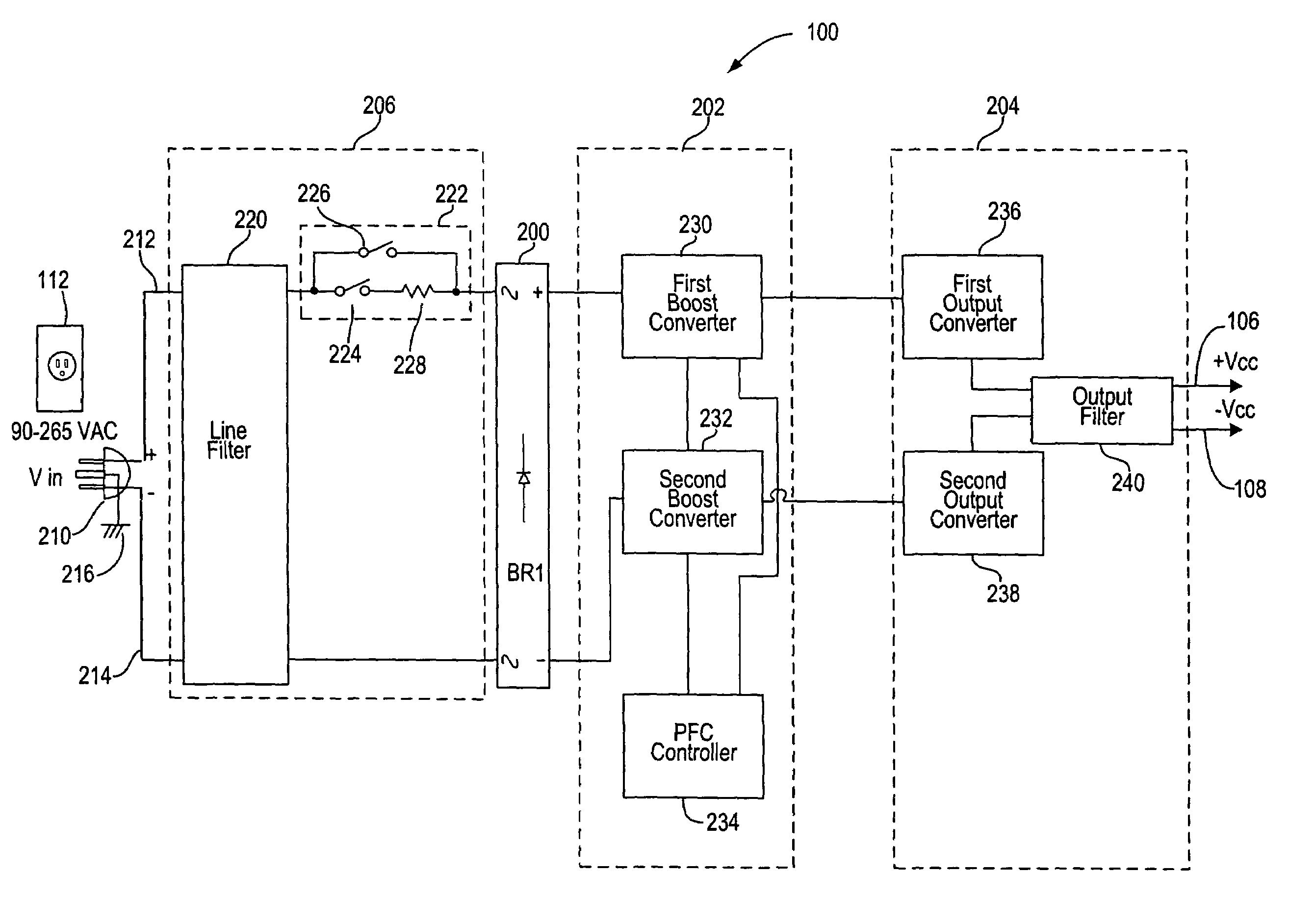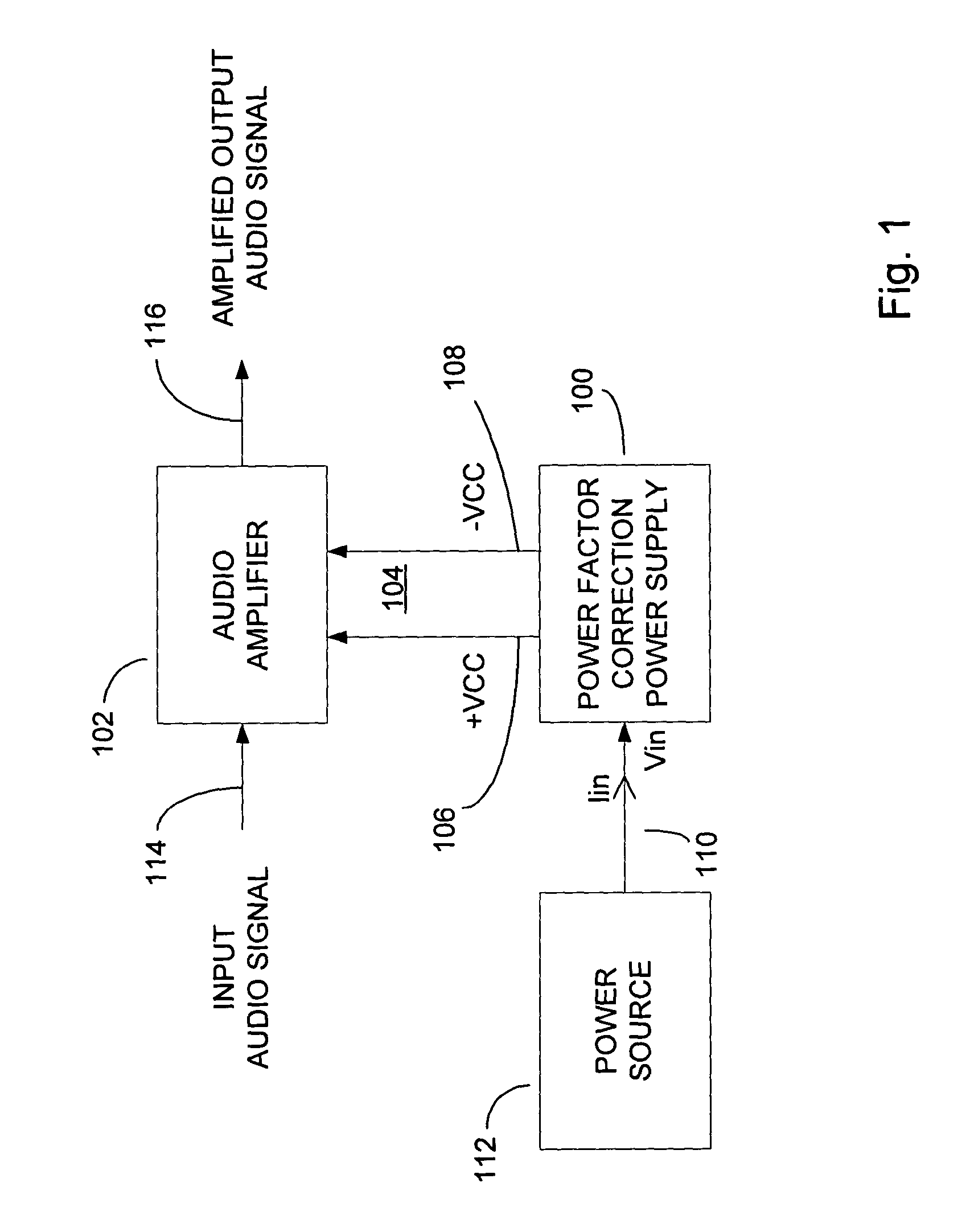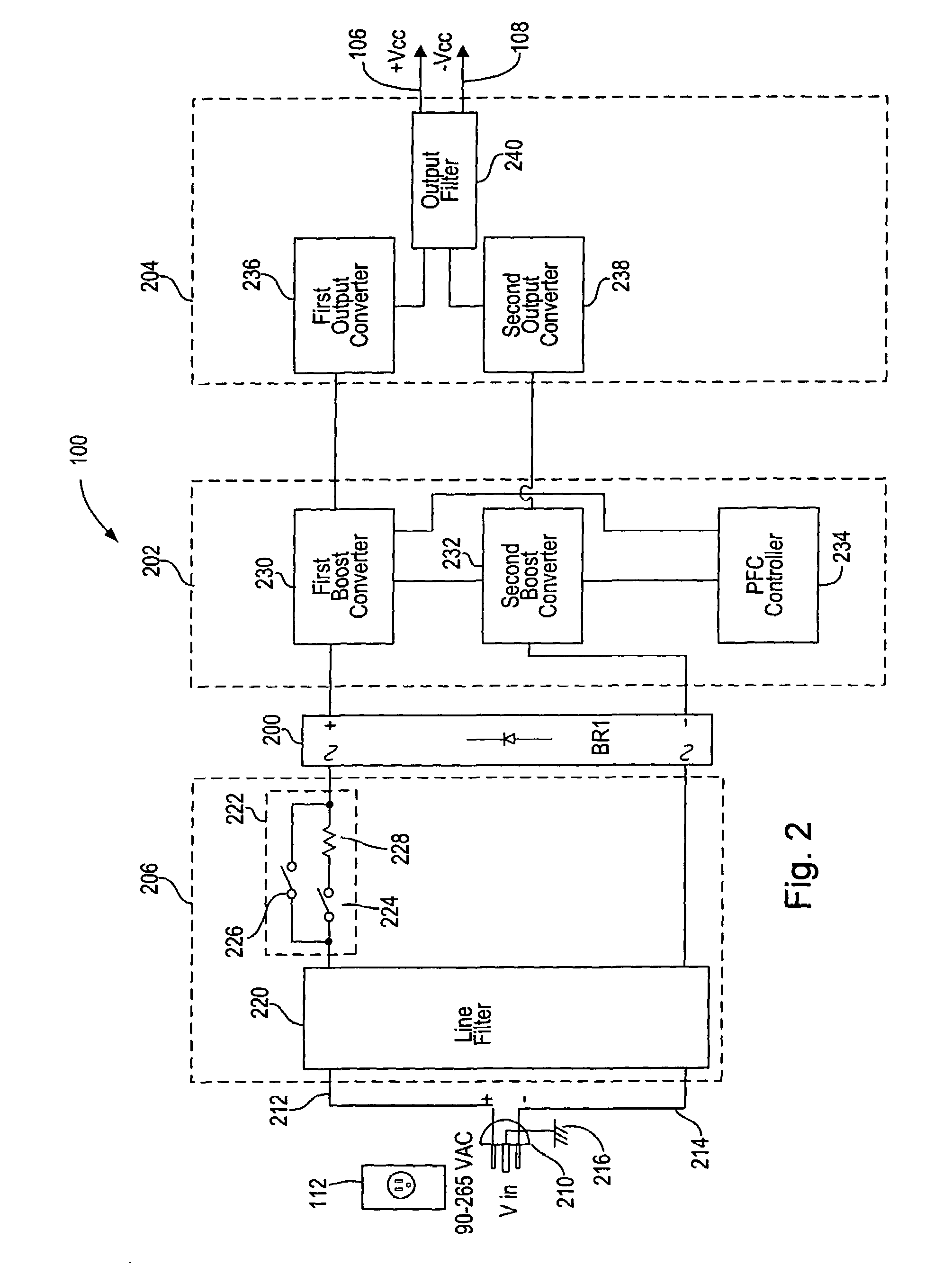Series interleaved boost converter power factor correcting power supply
a technology of power factor and converter, applied in the field of power supplies, can solve the problems of significant current demand on a source of input power, unsatisfactory low power factor, and power factor reduction, and achieve the effect of improving power factor and power factor
- Summary
- Abstract
- Description
- Claims
- Application Information
AI Technical Summary
Benefits of technology
Problems solved by technology
Method used
Image
Examples
Embodiment Construction
[0040]This invention includes a power factor correcting power supply. The power factor correcting power supply provides a regulated output voltage(s) using high efficiency switch mode operation. In addition, the power supply minimizes harmonics and ripple current. The power supply operates as a non-linear power electronic load with power factor correction (PFC) to increase the input power factor towards unity.
[0041]FIG. 1 is a block diagram of a power factor correcting power supply 100 in an example application supplying regulated DC voltage to an audio amplifier 102. The power factor correcting power supply 100 provides output power on one or more output power lines 104. In the illustrated example, the output power lines 104 include a positive DC output voltage (+Vcc) provided on a positive DC rail 106, and a negative DC output voltage (−Vcc) provided on a negative DC rail 108. Other examples of the power factor correcting power supply 100, may include fewer or greater numbers of o...
PUM
 Login to View More
Login to View More Abstract
Description
Claims
Application Information
 Login to View More
Login to View More - R&D
- Intellectual Property
- Life Sciences
- Materials
- Tech Scout
- Unparalleled Data Quality
- Higher Quality Content
- 60% Fewer Hallucinations
Browse by: Latest US Patents, China's latest patents, Technical Efficacy Thesaurus, Application Domain, Technology Topic, Popular Technical Reports.
© 2025 PatSnap. All rights reserved.Legal|Privacy policy|Modern Slavery Act Transparency Statement|Sitemap|About US| Contact US: help@patsnap.com



